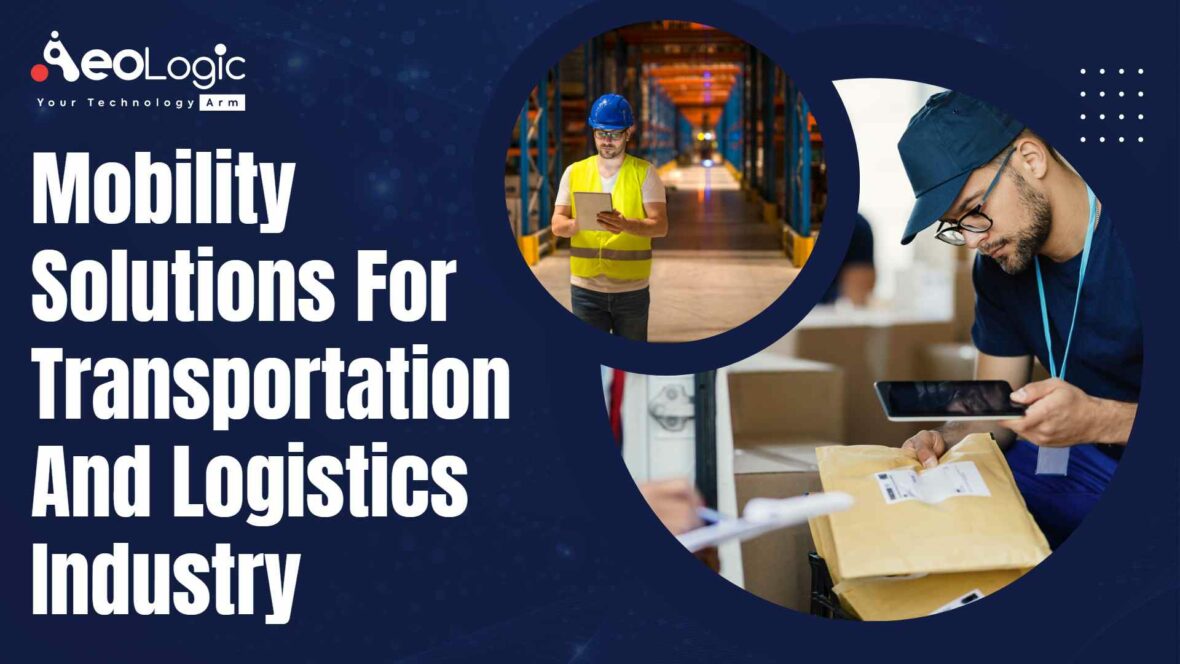The transportation and logistics industry plays a critical role in the global economy, facilitating the movement of goods and services from one place to another. With the rise of e-commerce and online shopping, the demand for transportation and logistics services has increased significantly, making it even more important for companies in this industry to optimize their operations and improve efficiency. One way to achieve this is through the use of mobility solutions.
What are Mobility Solutions?
Mobility solutions refer to software applications and technology tools that enable individuals and organizations to access and share information and data from any location, using any device. In the context of transportation and logistics industry, mobility solutions can help companies manage their fleets, optimize their routes, track their shipments in real-time, and improve their overall operations.
Benefits of Mobility Solutions for Transportation and Logistics Industry
There are several benefits of using mobility solutions in the transportation and logistics industry, including:
1. Increased efficiency
Mobility solutions can help companies optimize their operations and reduce the time and resources required to complete tasks. For example, fleet management software can help companies monitor the location and status of their vehicles in real-time, enabling them to make more informed decisions about route planning and driver scheduling.
2. Cost savings
By improving efficiency and reducing waste, mobility solutions can help companies save money on fuel costs, maintenance expenses, and other operational expenses. For example, route optimization software can help companies reduce the number of miles traveled by their vehicles, which can result in significant cost savings over time.
3. Improved customer service
Mobility solutions can help companies provide better customer service by providing real-time information about the status of shipments, estimated delivery times, and other important data. This can help companies keep their customers informed and up-to-date, which can lead to higher levels of satisfaction and loyalty.
4. Real-time tracking and monitoring
Mobility solutions can help companies monitor their operations in real-time, enabling them to quickly identify and address issues as they arise. For example, warehouse management software can provide real-time inventory data, enabling companies to quickly identify shortages or surpluses and adjust their operations accordingly.
Also Read: Innovations and Industry Trends In Manufacturing 4.0 in 2022
Types of Mobility Solutions for Transportation and Logistics Industry
There are several types of mobility solutions that are commonly used in the transportation and logistics industry, including:
Fleet management software
Fleet management software is a type of mobility solution that enables companies to monitor and manage their vehicles in real-time. This software can provide detailed information about vehicle location, speed, fuel consumption, and maintenance requirements, allowing companies to optimize their fleets and reduce costs.
Route optimization software
Route optimization software helps companies plan the most efficient routes for their vehicles based on factors such as traffic, weather, and delivery schedules. This can help companies reduce fuel costs, minimize travel time, and improve customer service.
Warehouse management software
Warehouse management software helps companies manage their inventory and operations in real-time, providing real-time data on inventory levels, order processing, and shipping. This can help companies optimize their warehouse operations and reduce costs associated with inventory management.
Transportation management software
Transportation management software helps companies manage their transportation operations, including routing, scheduling, and delivery tracking. This can help companies improve their logistics operations and reduce costs associated with transportation.
Mobile apps
Mobile apps provide a convenient way for drivers, warehouse personnel, and other employees to access information and perform tasks while on the go. This can help companies improve efficiency and reduce the time and resources required to complete tasks.
Also Read: 5 AI Trends that Are Changing the Face of Retail
Challenges of Implementing Mobility Solutions in Transportation and Logistics Industry
While there are many benefits to using mobility solutions in the transportation and logistics industry, there are also several challenges that companies must address when implementing these solutions, including:
Resistance to change
Some employees may be resistant to using new technology, particularly if they are accustomed to using manual processes or legacy systems. Companies must provide training and support to help employees adapt to new systems and processes.
Integration with legacy systems
Many companies in the transportation and logistics industry have existing legacy systems in place that may be difficult to integrate with new mobility solutions. This can require additional time and resources to ensure that the new systems work seamlessly with existing infrastructure.
Data security and privacy concerns
Mobility solutions involve the collection and sharing of sensitive data, such as customer information, inventory data, and delivery schedules. Companies must ensure that they have adequate security measures in place to protect this data from unauthorized access or theft.
Also Read: The Rise Of AI In The Transportation Industry
Best Practices for Implementing Mobility Solutions in Transportation and Logistics Industry
To ensure a successful implementation of mobility solutions in the transportation and logistics industry, companies should follow these best practices:
Conduct a thorough needs assessment
Before implementing any mobility solutions, companies should conduct a thorough needs assessment to identify the specific pain points and inefficiencies in their operations. This can help them select the right solution and ensure that it addresses their specific needs.
Select the right mobility solution provider
Companies should select a mobility solution provider with a proven track record of success in the transportation and logistics industry. They should also look for providers that offer customizable solutions and provide ongoing support and training.
Plan for training and change management
To ensure that employees are comfortable using new mobility solutions, companies should provide comprehensive training and support. They should also plan for change management to help employees adapt to new systems and processes.
Test and refine the solution before deployment
Before deploying any mobility solution, companies should test it in a controlled environment to ensure that it works as intended and meets their specific needs. They should also be prepared to refine the solution based on feedback from employees and customers.
Also Read: Top Emerging Technology Trends in Aviation Industry
Future of Mobility Solutions in Transportation and Logistics Industry
The future of mobility solutions in the transportation and logistics industry is exciting, with advancements in IoT and AI technologies, and the continued development of autonomous vehicles. Predictive maintenance and asset management will also become increasingly important, enabling companies to proactively address maintenance issues before they cause downtime or disruptions in operations.
Final Thought
Mobility solutions have the potential to revolutionize the transportation and logistics industry, providing companies with real-time data and insights that can help them optimize their operations, reduce costs, and improve customer service. While there are challenges to implementing these solutions, following best practices can help companies successfully integrate mobility solutions into their operations and realize the benefits they offer.
Are you looking to implement mobility solutions in transportation and logistics Industry? If yes so please feel free to contact us at support@aeologic.com






